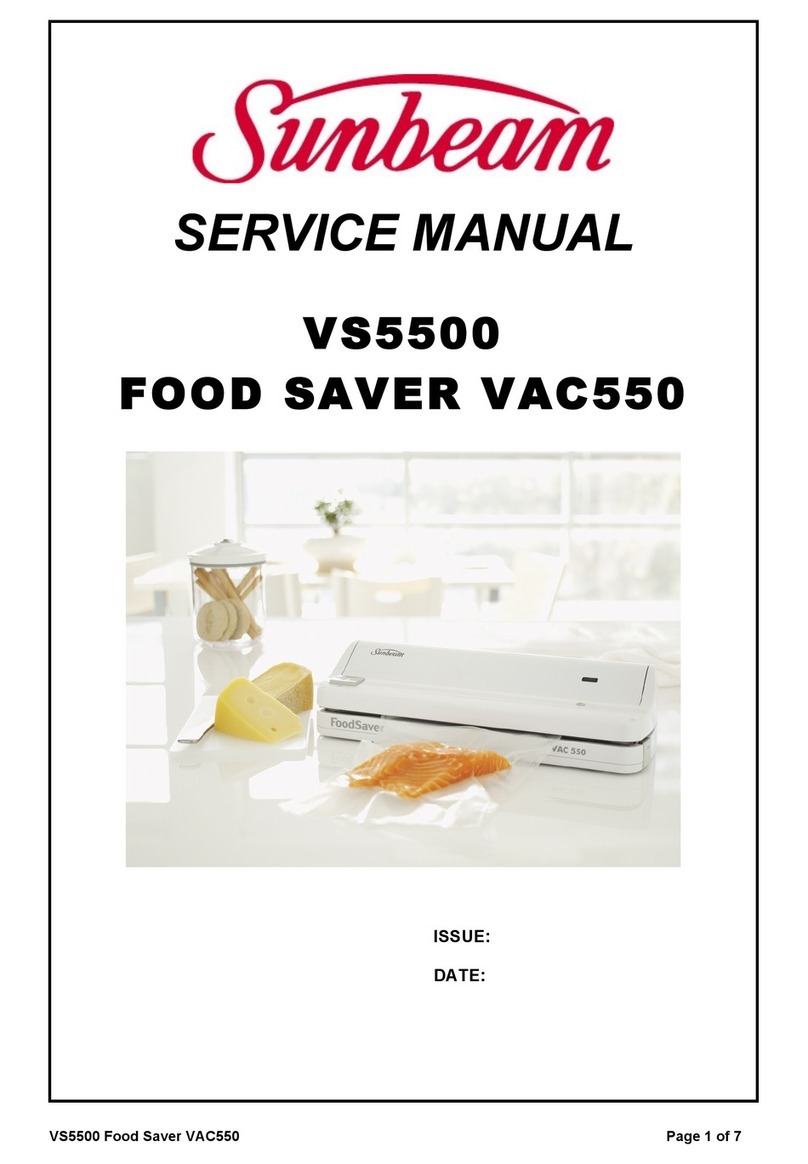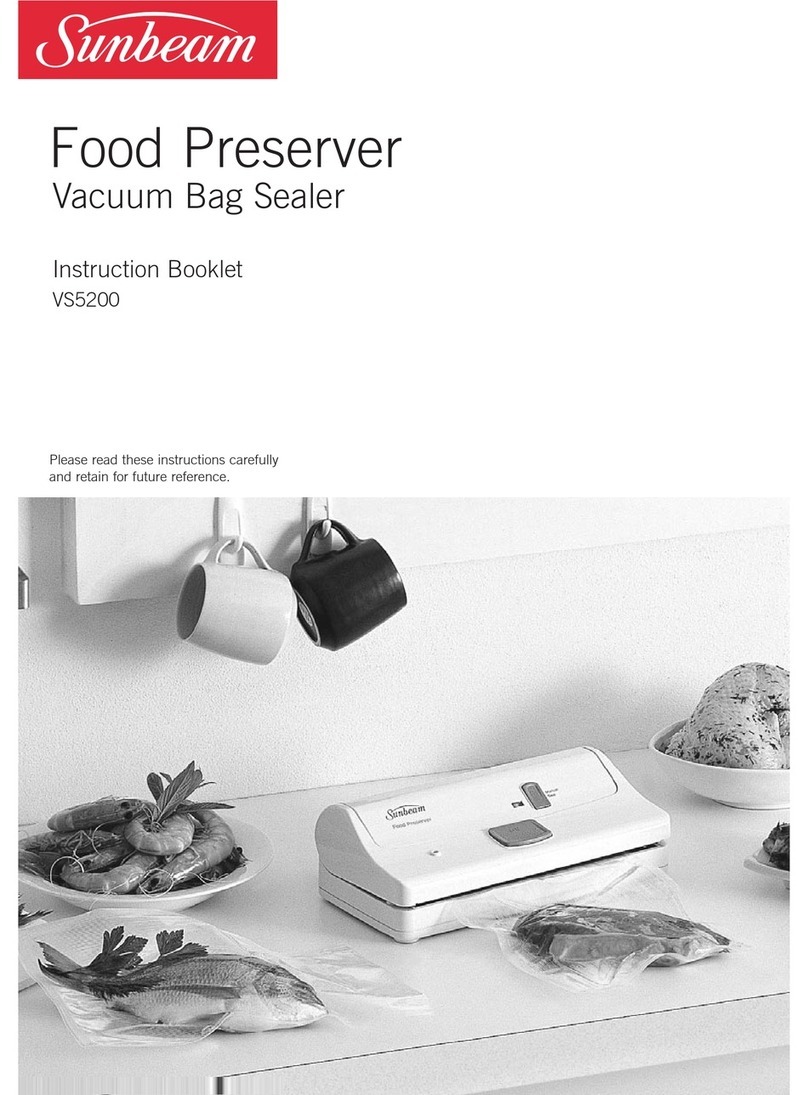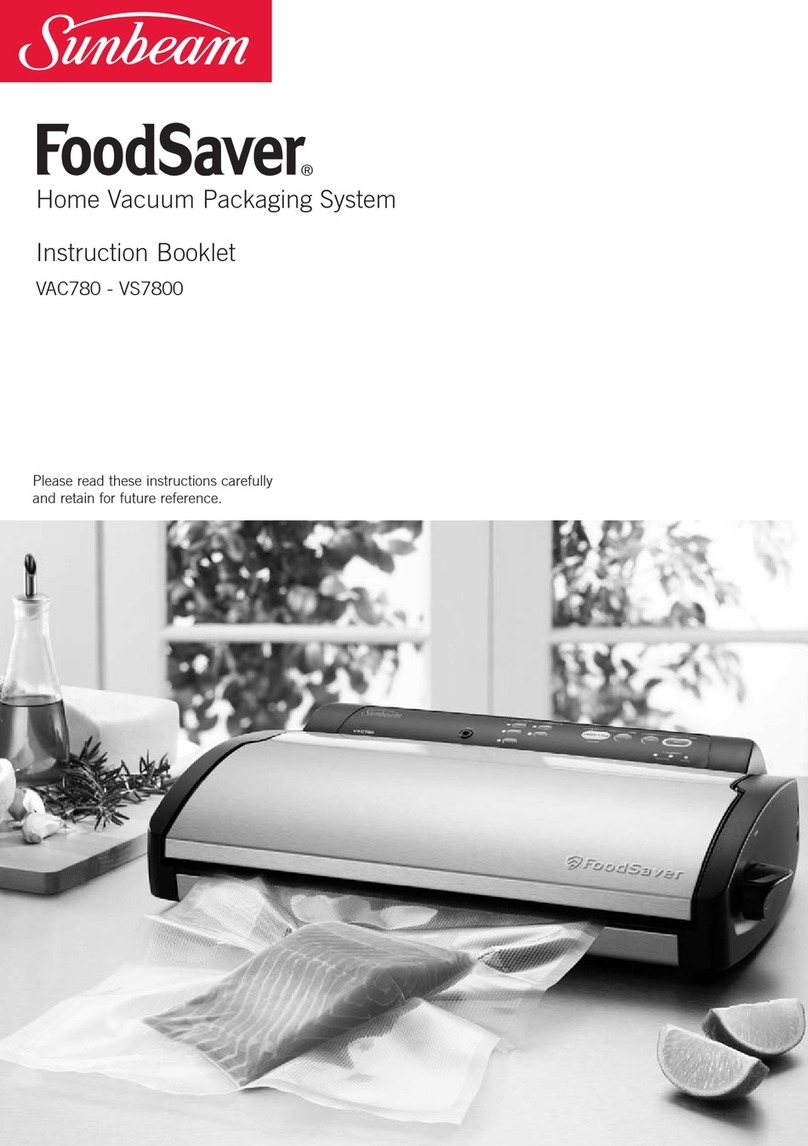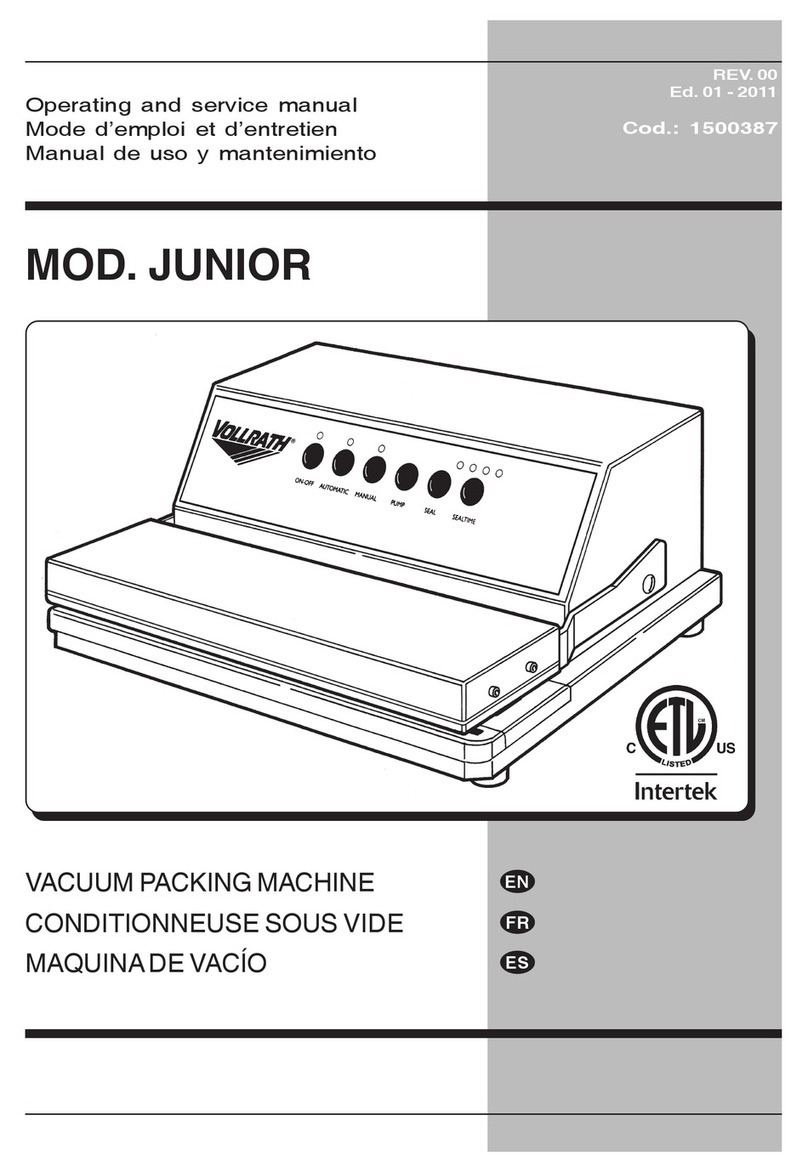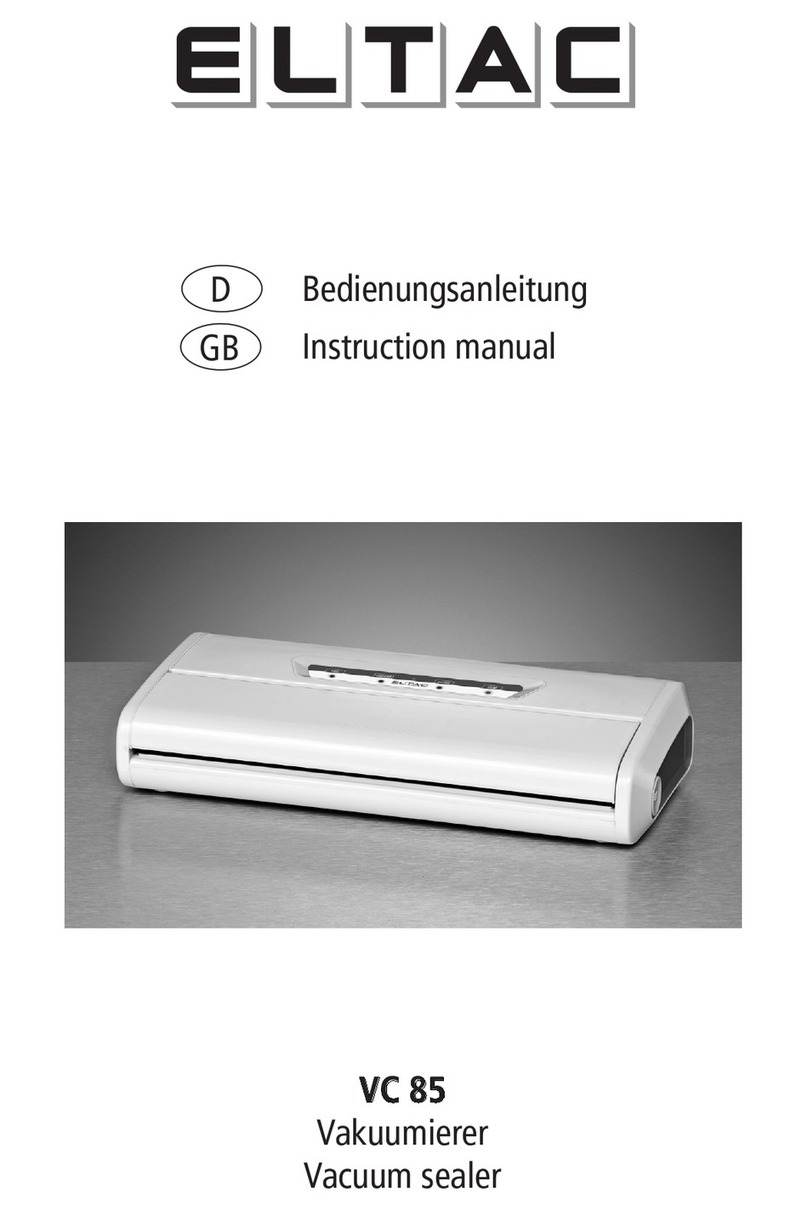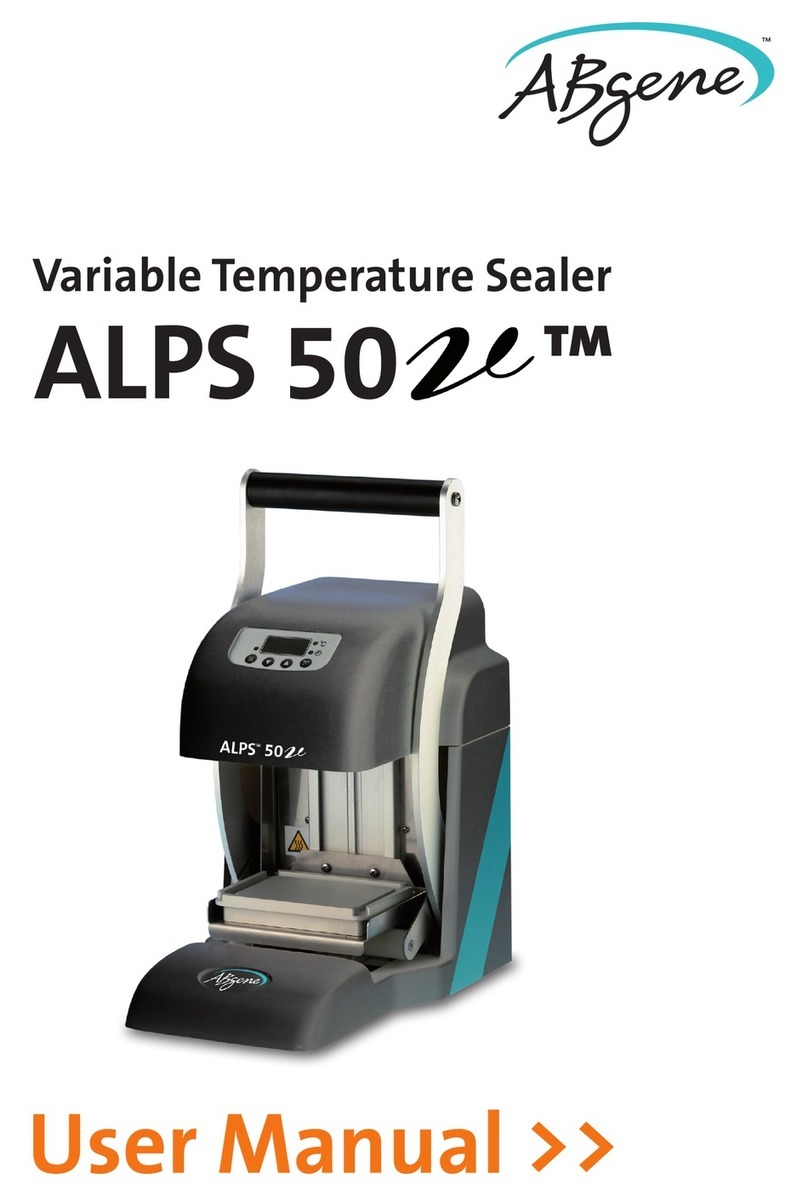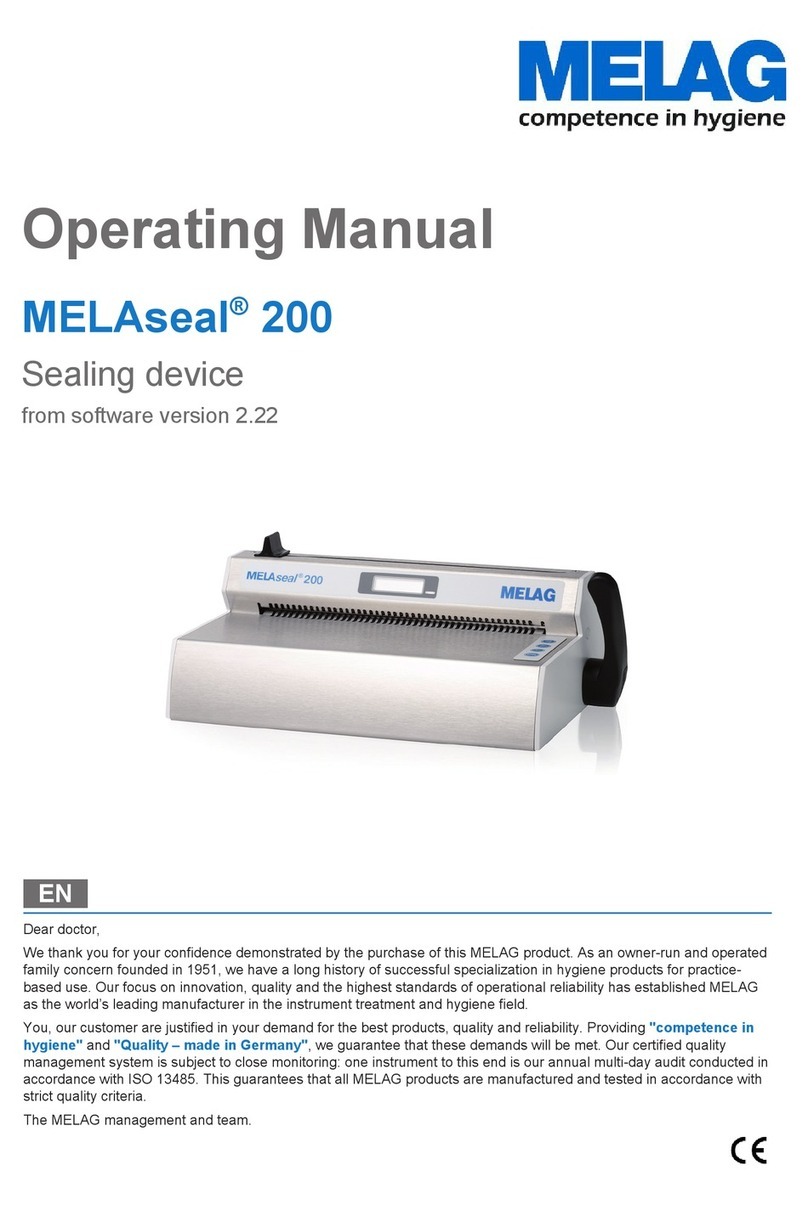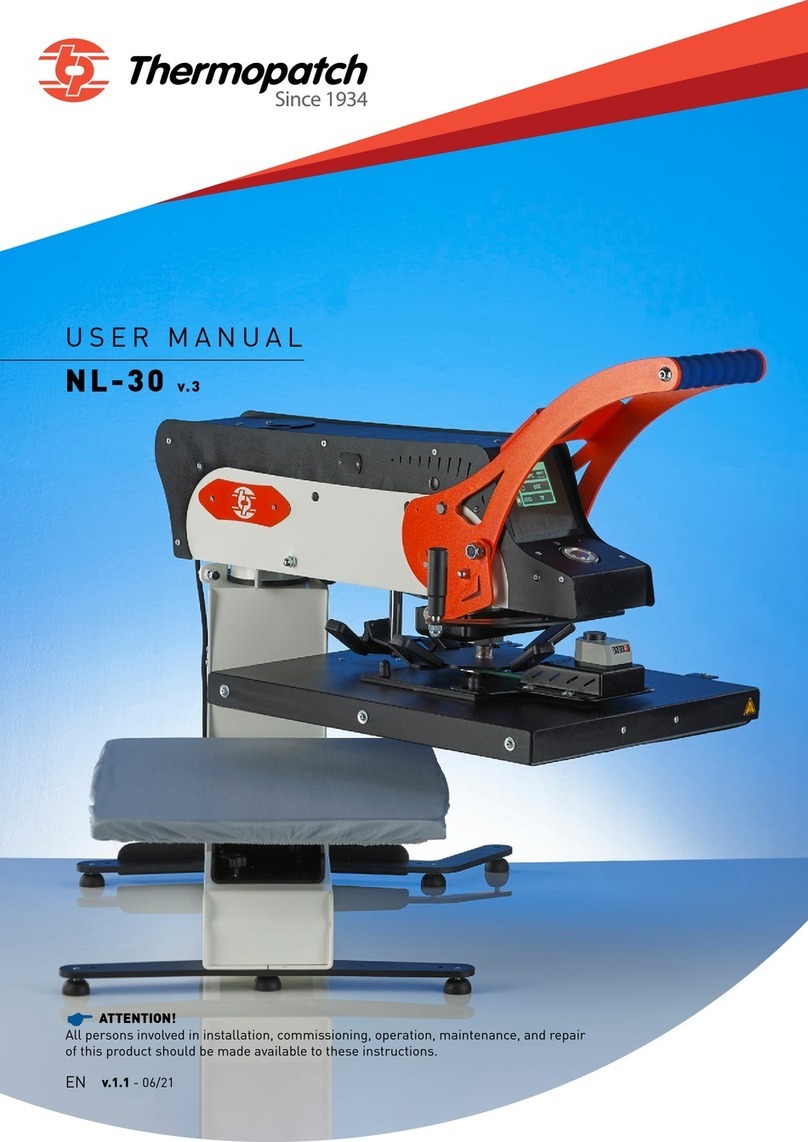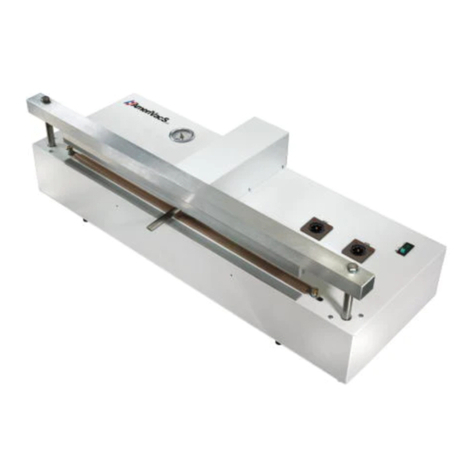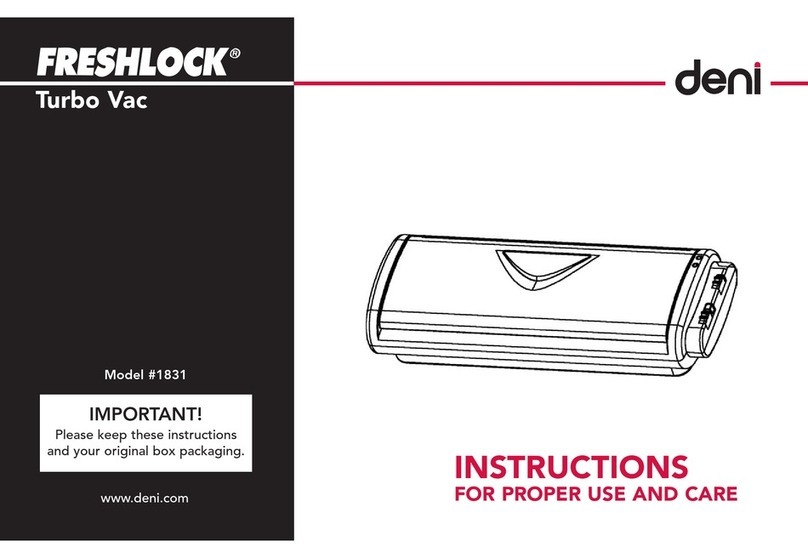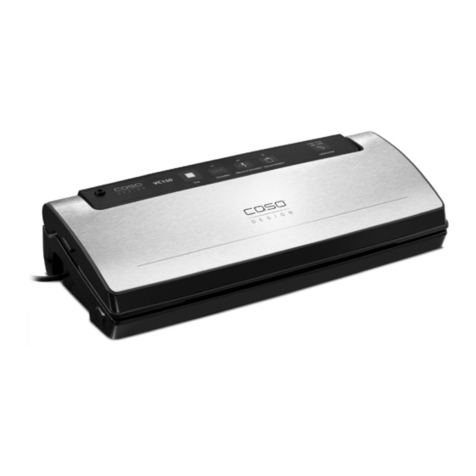Sunbeam VS8000 User manual

Home Vacuum Packaging System
Automatic Seal
User Guide
Need help with your appliance?
Contact our customer service team
or visit our website for information
and tips on getting the most from
your appliance.
Australia | visit www.sunbeam.com.au
phone 1300 881 861
mail Units 5 & 6, 13 Lord Street,
Botany NSW 2019 Australia.
New Zealand | visit www.sunbeam.co.nz
phone 0800 786 232
mail Level 6, Building 5,
Central Park,
660–670 Great South Road,
Greenlane, Auckland.
Sunbeam Corporation Limited | ABN 45 000 006 771
Sunbeam Corporation is a division of GUD Holdings Limited.
Sunbeam is a registered trademark.
EasyClean is a trademark of Sunbeam Corporation.
Made in China to Sunbeam’s specification.
Due to minor changes in design or otherwise,
the product you buy may differ slightly from the one shown here.
Approved by the appropriate electrical regulatory authorities.
©Copyright Sunbeam 2015.
10/15
VS8000
Australia
www.sunbeam.com.au
1300 881 861
Units 5 & 6,
13 Lord Street,
Botany NSW 2019
Australia
New Zealand
www.sunbeam.co.nz
0800 786 232
Level 6, Building 5,
Central Park,
660-670 Great South Road,
Greenlane, Auckland
New Zealand


Contents
PROFESSIONAL WOK
7.5 LITRE HEAT WALL WOK
User Guide
Need help with your appliance?
Contact our customer service team
or visit our website for information
and tips on getting the most from
your appliance.
Australia | visit www.sunbeam.com.au
phone 1300 881 861
mail Units 5 & 6, 13 Lord Street,
Botany NSW 2019 Australia.
New Zealand | visit www.sunbeam.co.nz
phone 0800 786 232
mail Level 6, Building 5,
Central Park,
660–670 Great South Road,
Greenlane, Auckland.
Sunbeam Corporation Limited | ABN 45 000 006 771
Sunbeam Corporation is a division of GUD Holdings Limited.
Sunbeam is a registered trademark.
EasyClean is a trademark of Sunbeam Corporation.
Made in China to Sunbeam’s specification.
Due to minor changes in design or otherwise,
the product you buy may differ slightly from the one shown here.
Approved by the appropriate electrical regulatory authorities.
©Copyright Sunbeam 2015.
6/15
WW7500D
Australia
www.sunbeam.com.au
1300 881 861
Units 5 & 6,
13 Lord Street,
Botany NSW 2019
Australia
New Zealand
www.sunbeam.co.nz
0800 786 232
Level 6, Building 5,
Central Park,
660-670 Great South Road,
Greenlane, Auckland
New Zealand
Important Safeguards 2
Important Tips 3
Features of your FoodSaver® appliance 4
Using your FoodSaver® appliance 10
Marinate mode 13
How to Vacuum Package using FoodSaver®
Canisters and Bottle Stoppers 14
Storage and Cleaning Instructions 15
Vacuum Packaging Non-Food Items 16
Food Preparation and Storage Guide 17
Guidelines for Vacuum Packaging 18
Preservation Guidelines 20
Troubleshooting 22

Important Safeguards
Read the Instructions Carefully.
For your own safety, always follow these basic precautions when using the FoodSaver®appliance:
2
If you have any concerns regarding the performance and use of your appliance,
please visit www.sunbeam.com.au or contact the Sunbeam Consumer Service Line.
Ensure the above safety precautions are understood.
Sunbeam is very safety conscious when
designing and manufacturing consumer
products, but it is essential that the product
user also exercise care when using an
electrical appliance. Listed below are
precautions which are essential for the safe
use of an electrical appliance:
• Read carefully and save all the instructions
provided with an appliance.
• Always turn the power off at the power outlet
before you insert or remove a plug. Remove
by grasping the plug - do not pull on the
cord.
• Turn the power off and remove the plug
when the appliance is not in use and
before cleaning.
• Do not use your appliance with an extension
cord unless this cord has been checked
and tested by a qualified technician or
service person.
• Always use your appliance from a power
outlet of the voltage (A.C. only) marked
on the appliance.
• This appliance is not intended for use by
persons (including children) with reduced
physical, sensory or mental capabilities,
or lack of experience and knowledge,
unless they have been given supervision or
instruction concerning use of the appliance
by a person responsible for their safety.
• Children should be supervised to ensure that
they do not play with the appliance.
• The temperature of accessible surfaces may
be high when the appliance is operating.
• Never leave an appliance unattended while
in use.
• Do not use an appliance for any purpose
other than its intended use.
• Do not place an appliance on or near a hot
gas flame, electric element or on a heated
oven.
• Do not place on top of any other appliance.
• Do not let the power cord of an appliance
hang over the edge of a table or bench top or
touch any hot surface.
• Do not operate any electrical appliance with
a damaged cord or after the appliance has
been damaged in any manner. If damage
is suspected, return the appliance to the
nearest Sunbeam Appointed Service Centre
for examination, repair or adjustment.
• For additional protection, Sunbeam
recommend the use of a residual current
device (RCD) with a tripping current not
exceeding 30mA in the electrical circuit
supplying power to your appliances.
• Do not immerse the appliance in water
or any other liquid unless recommended.
• Appliances are not intended to be operated
by means of an external timer or separate
remote control system.
• This appliance is intended to be used in
household and similar applications such
as: staff kitchen areas in shops, offices and
other working environments; farm houses; by
clients in hotels, motels and other residential
type environments; bed and breakfast type
environments.

When Vacuum Packaging:
1.Vacuum packaging is NOT a substitute
for refrigeration.
2.Use ONLY bags, rolls and canisters
manufactured by Sunbeam Products Inc.
3.Do not allow the Vacuum Channel to
fill up with liquids. This will render the
machine unusable. To prevent it, avoid
overfilling the bags and freeze liquids first.
4.You can prevent liquids from being
drawn into the appliance by placing a
folded paper towel at the top of the bag,
but below the seal area, before vacuum
packaging.
5.Do not attempt to create your own side
seals for a FoodSaver®Bag. These bags
are manufactured with special side
seams which are sealed all the way to
the outer edge. Creating your own side
seams can actually leave air channels
exposed which will cause leakage and
prevent a vacuum from being formed.
6.Always make sure you leave at least
2.5cm of extra bag material for each
time you plan to reuse the bag. To avoid
possible illness, do not reuse bags after
storing meats, fish or greasy foods.
7. If you are not sure whether you have
achieved a complete seal, simply seal
the bag again about 1cm above the
first seal.
8. Bulky items sometimes make it difficult
to achieve a smooth sealing surface.
Gently stretch the bag flat along the
Sealing Strip before closing the lid.
9. When packaging products with sharp
edges (dry spaghetti, silverware, etc.),
protect the bag from punctures by
wrapping the products in a cushioning
material, such as paper towels,
styrofoam, tissue, etc. Products can
also be vacuum packaged in canisters
to avoid any possibility of puncturing a
bag.
10. Avoid drawing powdery or fine-grained
products such as, flour, sugar and
coffee grinds into the appliance.
This will inhibit the vacuuming and
sealing process and may clog the unit,
preventing it from drawing a good
vacuum. To prevent this from occurring,
avoid overfilling the bags.
11. If using the FoodSaver®appliance to
re-seal packets, ensure that these have
been previously commercially heat
sealed. Do not use the sealing strip
to re-seal conventional plastic wrap,
sandwich bags and plastic bags as they
may melt over the sealing strip.
Important Tips
3
Table of contents
Other Sunbeam Food Saver manuals
